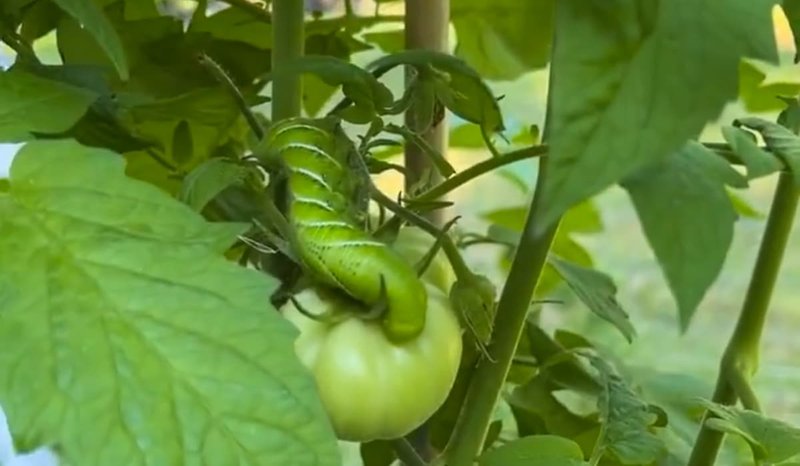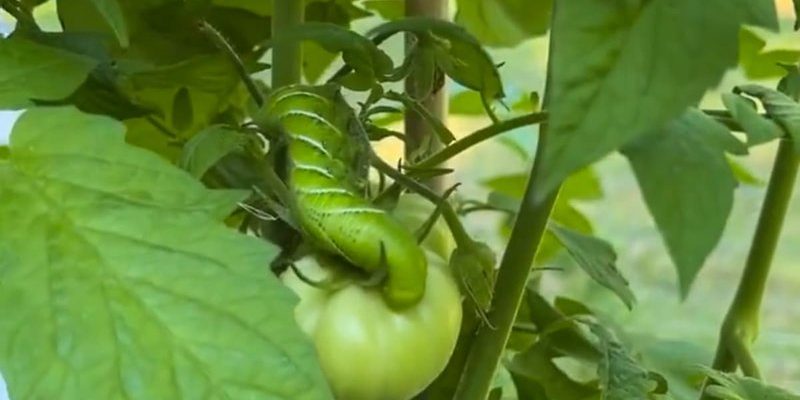
What Are Hornworms?
Hornworms are the larval stage of certain moths and can be a gardener’s worst nightmare—especially for those growing hydroponic tomatoes. Imagine these little guys as the party crashers at your tomato feast. They can grow up to 4 inches long and come in green or brown, blending seamlessly into the foliage of your plants.
These caterpillars are often referred to as “tomato hornworms,” and for a good reason. They particularly love feasting on tomato leaves and sometimes even the fruits. Their voracious appetite can strip a plant bare in just a few days. If you notice your tomatoes suffering, there’s a good chance hornworms are the culprits.
Why Hydroponics?
Okay, let’s chat about hydroponics. When you grow tomatoes hydroponically, you’re basically creating a mini ecosystem where you control everything—light, water, and nutrients. It’s like being the director of a play where tomatoes are the stars. The plants are grown in a nutrient-rich water solution instead of soil, which allows for faster growth and often larger yields.
Hydroponic systems can be set up in various ways, including deep water culture or nutrient film technique. These options allow for flexibility based on your space and resources. The key takeaway is that hydroponics can lead to healthier plants—if you can keep those pesky hornworms at bay!
How Hornworms Affect Hydroponic Tomatoes
Hornworms have a significant impact on hydroponic tomatoes, as they can quickly devastate your crops. When these caterpillars invade, they not only eat the foliage but can also weaken the plant itself. Healthy leaves are essential for photosynthesis, which means less energy for your tomatoes to grow.
If you’re raising hydroponic tomatoes, you might spot signs of hornworm presence through:
– **Chewed Leaves**: A sudden appearance of holes or missing leaves.
– **Frass**: This is a fancy word for caterpillar droppings. If you see small black pellets around your plants, a hornworm could be nearby.
– **Physical Presence**: If you’re lucky or unlucky enough, you may see them hanging out on the plants, relaxed and munching away.
It’s crucial to keep an eye on your hydroponic system, as hornworms can turn a thriving crop into a sad story.
Identifying Hornworms
Let me explain how to spot these sneaky pests. Identifying hornworms isn’t too hard once you know what to look for. Here are some telltale signs:
1. **Color and Size**: Hornworms are usually green or brown, and they can grow quite large—up to 4 inches long. They blend in well, so you might need to look closely to find them.
2. **Distinct Features**: Look for a curved body with a horn-like projection at one end, which gives them their name. They also have white stripes along their sides that can make them a bit easier to spot.
3. **Feeding Patterns**: If you notice leaves disappearing or finding a lot of frass, it’s time to inspect your plants. Often, hornworms will be found on the undersides of the leaves, making them a bit harder to detect at first glance.
Managing Hornworms in Hydroponic Systems
Handling hornworms in your hydroponic tomato setup requires a mix of awareness and action, kind of like a strategic game plan. Here are some effective methods to manage them:
– **Manual Removal**: Honestly, the simplest solution is to pick them off by hand. You can wear gloves if you don’t want to touch them directly. It’s surprisingly satisfying to rid your plants of these invaders.
– **Natural Predators**: Encouraging beneficial insects like ladybugs or parasitic wasps can help keep hornworm populations in check. Just make sure they’re safe for your hydroponic environment.
– **Organic Insecticides**: If you’re dealing with a large infestation, using Bacillus thuringiensis (Bt), a natural insect bacteria, can be effective. It’s safe for plants and targets only caterpillars.
– **Regular Monitoring**: Keep a close watch on your plants, checking them weekly—especially if they seem to be growing slowly. Early detection can prevent a bigger problem down the road.
Preventing Future Infestations
Let’s talk prevention. Just like planning your garden’s layout helps avoid problems, so does preparing for hornworms. Here are some tips to keep them at bay:
– **Crop Rotation**: If you grow tomatoes in cycles, consider rotating where you set up your hydroponic system. Changing locations reduces the likelihood that hornworms will find your new setup.
– **Diverse Planting**: Mixing different plants can confuse hornworms and prevent them from settling. Companion planting with herbs like basil can keep them away.
– **Cleanliness**: Keep your hydroponic system tidy. Remove dead leaves and debris where hornworms can hide. A clean environment makes it less appealing for them to hang out.
Troubleshooting Hornworm Problems
Sometimes, despite your best efforts, hornworms can still be a pesky issue. If you find yourself facing a bigger infestation, don’t panic—there are steps to troubleshoot:
– **Assess Your System**: If your plants are showing signs of stress, check for other issues like nutrient imbalance or water problems. Sometimes, weak plants attract pests.
– **Reevaluate Strategies**: If manual removal isn’t cutting it, consider ramping up your integrated pest management (IPM) approach. That means combining natural predators, organic treatments, and regular monitoring.
– **Seek Expert Advice**: If you’re stuck, don’t hesitate to reach out to gardening forums or local agricultural extensions. These communities can be rich resources for finding effective solutions.
Closing Thoughts
Hornworms might seem like a daunting foe in the world of hydroponic tomato systems, but they aren’t unbeatable. With some vigilance and strategy, you can protect your beautiful plants and enjoy a bountiful harvest. Just think of yourself as a gardener-turned-warrior—armed with knowledge and ready to defend your crops! Happy gardening!

